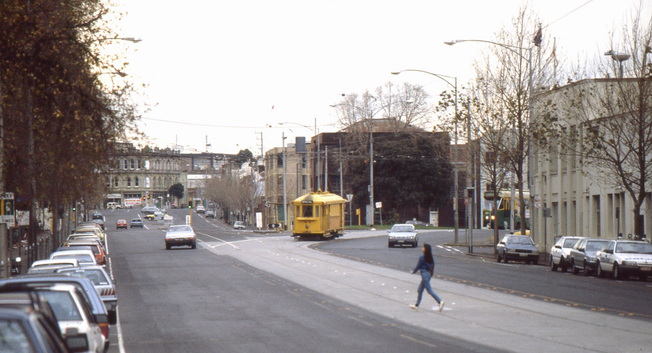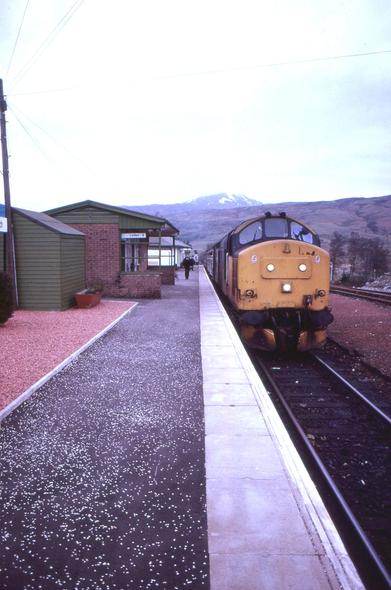Today's historic photo of the day: Works #tram no 10W is the brightest coloured thing in the scene on a winters' day as it turns from Peel Street into William Street, Melbourne, Vic, July 1 1989.
Works trams are no longer seen in Melbourne, but until about 2002 there was a small fleet of these non passenger carrying trams that were used for tasks such as carrying materials between depots, grinding the rails and as in this case, cleaning (or scrubbing) the tracks free of mud, leaves and debris.

